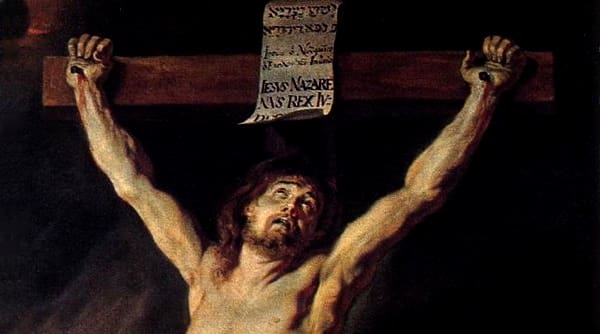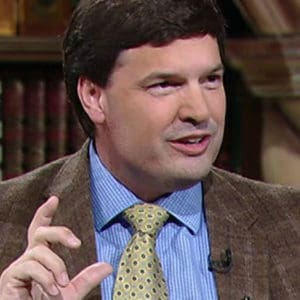The Life of Prayer: the sure path to freedom
Christian prayer is a simple movement of the soul towards God. It is a movement of love, by which we cling to Him with the boldness of faith, trusting in his loving kindness. This movement of love is also a conversation, a heart to heart, in which He listens to all our concerns with the greatest of interest and in which He also shares the concerns of his heart with us. He actually hopes in us and puts his trust in us in a profound way.
![PeterPaulRubensTheCrucifiedChrist[Cross,Crucifixion]WGA20190 for post on the life of prayer](https://spiritualdirection.com/wp-content/uploads/2014/02/PeterPaulRubensTheCrucifiedChristWGA20190-218x380.jpg) Such prayer is possible because of what Christ has done for us. By his death on the Cross, He has authority over sin – the great barrier between us. He has suffered all its consequences so that all that is a betrayal of the truly human, all our ignobility towards one another and towards ourselves, already has been destroyed in his death. These are dying realities in mortal humanity – but new humanity, the humanity restored by Christ, is no longer subject to them. By rising from the dead – the Lord rescued all that is good, holy and true about what it means to be free, to thrive, to fully be who we really are.
Such prayer is possible because of what Christ has done for us. By his death on the Cross, He has authority over sin – the great barrier between us. He has suffered all its consequences so that all that is a betrayal of the truly human, all our ignobility towards one another and towards ourselves, already has been destroyed in his death. These are dying realities in mortal humanity – but new humanity, the humanity restored by Christ, is no longer subject to them. By rising from the dead – the Lord rescued all that is good, holy and true about what it means to be free, to thrive, to fully be who we really are.
For each of us personally, this means, if we humbly ask Him, He not only removes the barriers of sin that imprison us in all kinds of falsehoods. He also reveals the truth about who He created us to be, and in revealing this truth, He establishes us in it. To finally be free, to finally be who we truly are – this is what the Lord wants for us. Freedom from sin is a great freedom – because we are free of those things that betray and undermine the goodness which God sees in us. Christian prayer is always gratefully aware of the price that was paid for this freedom.
This freedom bought at the price of Christ’s own blood comes from knowing the truth about sin in our lives. When we know what our sin really is, we have the freedom to reject it. This is why we examine our conscience. We look at our life through the magnifying glass of the Cross. Our hearts are pierced. In tears we realize how much we need the Lord and how much He loves us. Such tears help us correct our course, to renew our efforts to follow in his steps again. The Cross, that sign of God’s unfathomable love, brings into the proper perspective how we are living our life.
By his death, Jesus revealed how much we are loved. God would not love us if He did not see the good in which He created us. He is drawn to us, captivated by us. And it is an awesome good which He contemplates in us- for we are his image and likeness. So important is this for his work of Creation that he suffered death itself to rescue this image, that it might not perish, that it might achieve its destiny to show the glory of God in the World. Whoever thinks about his life in light of Christ’s great love for him – he comes to a certain knowledge about what obstacles in his life must be surrendered to the Lord. As this is done- this truth brings ever greater freedom, and new kinds of freedom that were previously unimaginable.
The greatest freedom we grow in is the freedom to love – when Jesus rose from the dead and ascended into heaven, He realized the perfection of humanity in his very person. This new life is not passive. It is filled with love. It is humanity set on fire with love. That humanity should be capable of living in ceaseless, unimpeded love – this is the great truth which we must not only know but live. And Jesus intercedes at the Father’s right hand that this fire might be ignited in our hearts too – that we too might love with the full freedom of the children of God. This Fire – it is the Holy Spirit.
As we examine our conscience and repent of sin, as we strive to live a new life, there are always new outpourings of the Holy Spirit, new ways the Fire of Love, the Fire of Freedom is ignited in our hearts. It grows and matures – as long as we are open to this outpouring and obedient to its promptings, we are on the sure path to freedom.
+
Editor’s Note: For more of Anthony’s insights on prayer, don’t miss his book, Hidden Mountain Secret Garden, an experience like no other. Anthony has an unusually profound understanding of mystical theology and lives a life of deep prayer. Among his many accomplishments and responsibilities, Dr. Lilles now teaches theology for the Avila Institute.
+
Art for this post on the life of prayer: The Crucified Christ, Peter Paul Rubens, between 1610 and 1611, PD-US author’s life plus 100 years or less, Wikimedia Commons.





